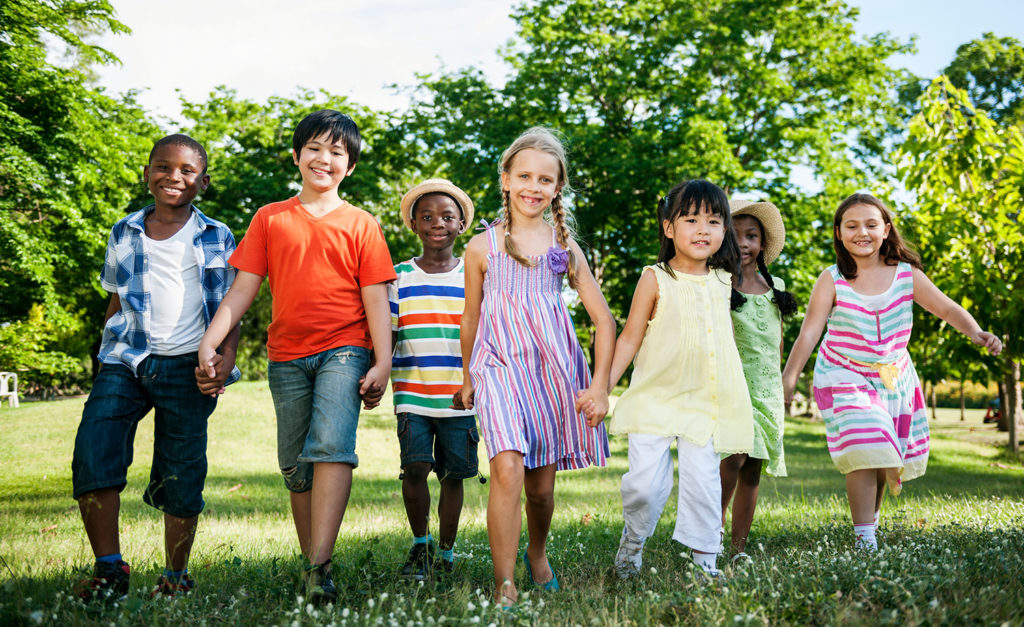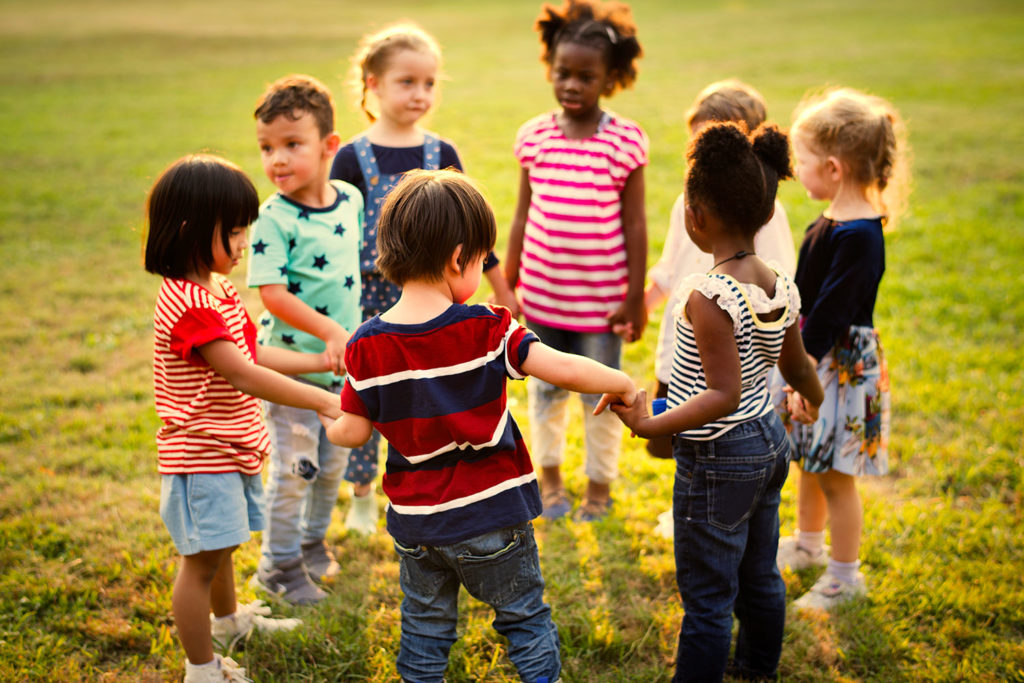As holistic pediatricians and as an important aspect of pediatric care, we have always believed that it is important to be aware of racial bias and to talk with children about bias and racism. With the recent death of George Floyd and the resulting protests, these topics have not only heighted the awareness, but also underscored the urgency with which these issues need to be addressed on a national and global level. Your children are probably aware of the news reports surrounding Mr. Floyd’s death and the very public reaction to it, and they very understandably most likely have questions and concerns. After all, most adults do too! To help our families deal with these complex issues, we are sharing tips and guidelines published by The American Academy of Pediatrics (AAP), for talking about racism and confronting racial bias, taking into account your child’s age and development. There are also many other good resources available to parents, which can be used to implement or supplement these guidelines, and we encourage you to explore all that is available to you. The investment of time and energy will be worth it! Racism, even vicarious racism witnessed through social media, conversations with friends or family or media images, has been found to harm children’s health.
And now, some helpful guidance from the AAP (the information in the article, below, was last updated in July, 2019):
“How Do Children Learn Racial Bias?
Children learn about racial differences and racial bias from an early age and learn from their first teachers—their parents—how to deal with and react to these differences.
The process of learning racial bias is a lot like learning a new language (e.g., a child raised bilingual vs. a child who starts learning Spanish in junior high). Biology determines a critical early learning period as well as a later window where learning is much harder.
- As early as 6 months, a baby’s brain can notice race-based differences.
- By ages 2 to 4, children can internalize racial bias.
- By age 12, many children become set in their beliefs—giving parents a decade to mold the learning process, so that it decreases racial bias and improves cultural understanding.
But like language immersion, children exposed to society will gain fluency in racial bias even if their parents do nothing.
Strategies to Help Children Deal with Racial Bias
There are three strategies that parents can use to help their children deal with racial bias:
- Talk to your children and acknowledge that racial differences and bias exist.
- Confront your own bias and model how you want your children to respond to others who may be different than them.
- Encourage your children to challenge racial stereotypes and racial bias by being kind and compassionate when interacting with people of all racial, ethnic, and cultural groups. …
How Parents Can Confront Their Own Racial Bias
Parents must first confront their own biases, so that their example is consistent with messages of racial and ethnic tolerance.
- Be a role model. Identify and correct your own racially biased thoughts, feelings, and actions. If you want your children to believe what you preach, you have to exhibit those behaviors as well. Your everyday comments and actions will say more than anything else.
- Have a wide, culturally diverse social network. Encourage your children to have diverse circles of friends, as well. This lends itself to engagement in multicultural activities and experiences.
- Travel and expose your children to other communities. This can help them understand that there is diversity in the world that might not be represented in the community that you live in.
- Do not stereotype police officers and other groups or talk about law enforcement in a negative way.
- Get involved in your child’s school, your place of worship, and politics. Parents who are involved in this way are better able to advocate for fair treatment of racially marginalized groups and raise awareness of race issues in other groups.
Tips for Talking About Racial Differences & Racism
Talking about race is not racist. It’s OK—and important. From a young age, children may have questions about racial differences and parents must be prepared to answer them. But, it’s important to keep your child’s developmental readiness in mind.
- For pre-schoolers: At this age, your child may begin to notice and point out differences in the people around you (i.e., at the grocery store, at the park, etc.). If your child asks about someone’s skin tone, you might say, ‘Isn’t it wonderful that we are all so different!’ You can even hold your arm against theirs to show the differences in skin tones in your family.
- For grade-schoolers: This is the age that is important to have open talks with your child about race, diversity, and racism. Discussing these topics will help your child see you as a trusted source of information on the topic, and he or she can come to you with any questions. Point out stereotypes and racial bias in media and books such as villains or ‘bad guys’ in movies.
- If your child makes comments or asks you questions about race based on school incidents or something they read or watched: Further the discussion with questions such as, ‘How do you feel about that?’ and ‘Why do you think that?’ This is also helpful if your child heard something insensitive or if your child experienced racial bias themselves. Before responding to his or her statement or question, figure out where it came from and what it means from his or her perspective. See Talking to Children About Tragedies & Other News Events for more information.
These conversations begin to lay the groundwork for your child to accept and respect everyone’s differences and similarities. As children mature, the answers to questions will become more complex. These are moments to learn what your child understands or is struggling to understand about racial bias.
Remember:
To create a culture of inclusiveness, we all must look at and acknowledge our biases, so we can do something about the ones that are unfair or cause harm to others—like racial bias. Understanding the way people feel about and behave toward those outside their own group can help communities heal after a tragedy, as well as prevent future ones.
Additional Resources to Help Parents Address Racism & Discrimination:
- Teaching Children Cultural Pride
- Help Your Kids Find Books with Diverse Characters (Common Sense Media)
- Apps and Games with Diverse Characters (Common Sense Media)
- Beyond the Golden Rule. A Parent’s Guide to Preventing and Responding to Prejudice (Tolerance.org)
- A Conversation on Race (New York Times)
- Racism and Its Impact on Child and Adolescent Health (AAP Policy Statement). “
On June 1, 2020, following the death of Mr. Floyd and in the midst of the resulting protests, the AAP issued a news release condemning racism and offering further advice for families for talking with their children. In that news release, while cross-referencing the above article, the AAP offered these additional tips:
- Check in with your child. Ask what they know, what they’ve seen, and how they are feeling. Validate their feelings and reassure them it’s normal to feel emotions. You know your child best and what information they can handle. For younger children, you can tell them what you are doing to keep your family safe. For pre-teens and older children, you can ask if they’ve experienced mistreatment or racism, or witnessed this happening.
- Watch for changes in your child’s behavior – some children may become more aggressive, while others will become withdrawn. If you are concerned about your child suffering more severe anxiety, fear or distress, reach out to your pediatrician or mental health provider for additional support.
- Place limits on what your child sees in media. Do not leave the TV on in the background. With older children and teens, watch with them and discuss what you’re seeing. Listen to their observations and share your own. You can use commercial breaks, or pausing, to have brief discussions. With younger children, limit their exposure to media, including TV, smartphones or tablets, and make sure media exposure occurs in a common area where parents can check in.
- As an adult, tune into your own emotions and check that you are ok. If you are not, ask for help to deal with the trauma and emotional impact of these images.
- Create a list of your own coping strategies, and when you need to use them, tap into that list.
- For all families, this is a teachable moment, when you can discuss the history of racism and discrimination in the U.S. and equip your children to make change.
- If you struggle to find the “right” words, consider using books or other resources to share with your child. HealthyChildren.org offers some tips in this article. You can share with your children that no one is perfect, talk about what you are doing to be anti-racist, what you have learned, and how you as a family can step up.
As your medical home in Denver, we hope that the above information provides you with a framework for addressing within your family the difficult issues of racism and racial bias. (And please don’t hesitate to reach out to us if you require additional support.) These conversations may not be easy, but they are necessary and hopefully will be occurring in families throughout the United States. In the words of Joseph Wright, MD, MPH, FAAP, a member of the AAP Board of Directors and past chair of the AAP Task Force on Addressing Bias and Discrimination, “If we are to progress in this country, it’s going to be because we help our children, adolescents and young adults learn not just that racism exists, but that it is something all of us can work together to dismantle.”






Leave a Reply